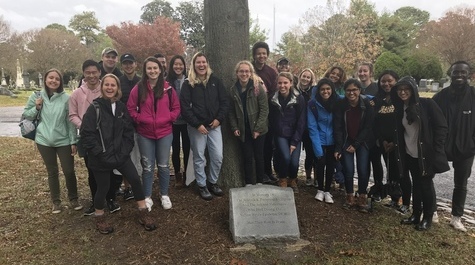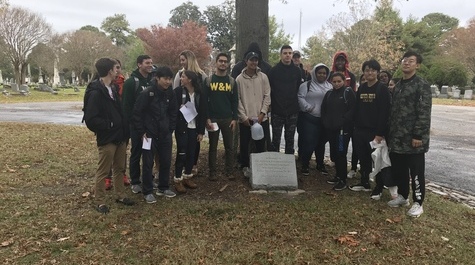COLL 300 "Bodies that Matter"
作为校园COLL 300的一部分,参加奥巴桑乔博士讲授的全球健康概论课程的学生参观了诺福克的埃尔姆伍德公墓。 这次访问的目的是研究1855年黄热病流行对诺福克市和县的影响。 Donna Bluemink, a historian who documented the deaths from the epidemic, took the students on a tour of the gravestones of the doctors, ministers and ordinary citizens who died during the epidemic and are buried at the Cemetery. Robert Hitchings, a historian, formally for Norfolk city and now for Cheasapeake, went through the effects of the outbreak on the life of the citizenry of the town and county of Norfolk. The attached pictures show the students at the Cemetery.
The COLL 300 course is part of the COLL curriculum at the College and the purpose of the COLL 300 courses is to introduce students to ideas outside their sphere of direct experience and challenge their ways of thinking even it causes a them to be a little uncomfortable. The COLL 300 theme for the Fall semester is “Bodies that Matter”. The visit included seeing the Black cemetery next to the White one, and contrasting the graves of the Doctors who passed to those of lesser known individuals. Attached is the picture of the grave of Dr. George Upshur who died of Yellow Fever after treating many patients during the Yellow Fever Epidemic of 1855 in Norfolk.


















